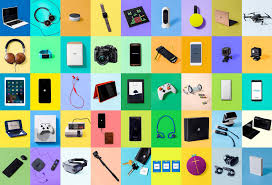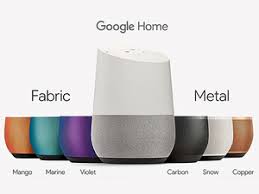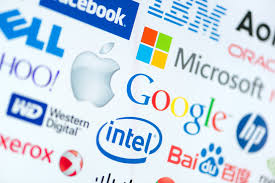 Warning -- this is not a blog post about what to give. There are plenty of click-bait websites, like 5 Cool Gifts or 25 Great Tech Gifts or even a list described as "The Perfect Gifts for Grandma and Grandpa" -- really? Maybe these are the perfect gifts – or perhaps for some family members, the FirstStreet list is appropriate. Among all of these lists, there might be some intriguing items that might be welcome. And don’t forget a set of portable batteries – extremely useful for devices during power outages. Okay that is enough about the What – and For Whom.
Warning -- this is not a blog post about what to give. There are plenty of click-bait websites, like 5 Cool Gifts or 25 Great Tech Gifts or even a list described as "The Perfect Gifts for Grandma and Grandpa" -- really? Maybe these are the perfect gifts – or perhaps for some family members, the FirstStreet list is appropriate. Among all of these lists, there might be some intriguing items that might be welcome. And don’t forget a set of portable batteries – extremely useful for devices during power outages. Okay that is enough about the What – and For Whom.
More important than the gift itself – how should, can, or will it be used? Many of us have technology what was once useful and for the owner, it's now junk -- defined as a purchased tech item that is too slow, too obsolete, too heavy, or just too much trouble. Sometimes tech-enabled items become junk almost immediately for a variety of reasons that the giver did not consider or forgot about. Look around your own environment and the tangled nest (pun intended) of cables, connectors, chargers, cords. Now consider the prospective gifts and factors such as:
- Out of the box assembly. Ideally the product has an online video somewhere that family members can view, maybe even together. Consider the video Amazon Echo setup. Seems easy enough – including remembering to plug it into the wall. Surprisingly, after watching the video, it does not actually require a smartphone to get started – it can be done from a browser on a device that has Wi-Fi. However, like every other device joining a Wi-Fi Network for the first time, it will need the password to access it.
- Ease of installation. Does a product need to access to Wi-Fi? Oh, and does the home already have Wi-Fi? Does it need an initial setup that involves downloading software from a central site (like Google Play or the iOS App Store) – this is unfortunately the state of the art for phone and tablet apps -- and most users, according to Pew, do not immediately do the update.
- Updates -- too frequent, too many. Don’t forget the updates for devices (like smartphones, PCs and Macs) – which usually bring along security patches. Microsoft, for example, has a pleasant weekday nicknamed Patch Tuesday – we are supposed to check out and run the updates which no doubt close gaping holes that hackers love, and which the prior week were not perceived as gaping. One of the upsides of the Voice First offerings like Alexa, Siri, and Google Assistant – updates occur on the other side of the Internet wall, in the so-called Cloud, done in one place that the user just accesses.
- Ongoing support. Perhaps this should have been mentioned first, not last. Who will help us when our devices appear inexplicably unusable? Whether it is our ever-so-smart phones, our oddly-blue screens, our uncharged connections, or other bafflement -- like accessing Internet radio stations or streaming music or video? Who gave us that product anyway and do we call them? Or do we look for a support alternative, whether it is dropping in at a tech store, calling the local or phone-based Geek team or learning what’s new by scanning through The Villages Computer Club website – the 55+ community of over 119,000.
from Tips For Aging In Place https://www.ageinplacetech.com/blog/its-season-considering-tech-gifts-older-adults
 d devices and offer scheduled alerts. As of November, 2017, Amazon has sold more than 20 million of these devices. Product features are regularly added via the cloud, eliminating the requirement for user-dependent software upgrades – and perhaps even the initial startup that requires a smartphone. For example, customization for specific voices, nesting queries within a context, or setting
d devices and offer scheduled alerts. As of November, 2017, Amazon has sold more than 20 million of these devices. Product features are regularly added via the cloud, eliminating the requirement for user-dependent software upgrades – and perhaps even the initial startup that requires a smartphone. For example, customization for specific voices, nesting queries within a context, or setting  You remember Big Pharma. Not long ago we heard a lot about it. This
You remember Big Pharma. Not long ago we heard a lot about it. This  Two November events highlight competitions and new firms.
Two November events highlight competitions and new firms.